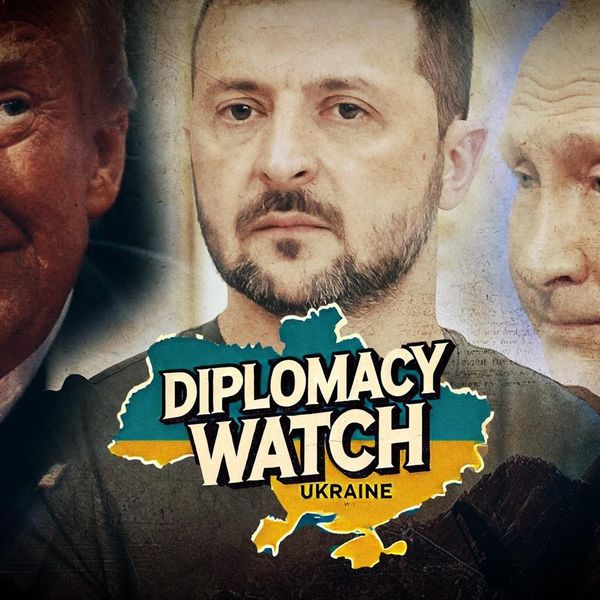This is the first installment in a multi-part Responsible Statecraft series on the Strategic Competition Act (S. 1169), a bill under consideration that would effectively constitute a declaration of cold war on China by the U.S. Congress. We begin with an overview of the bill's framing of the threat China poses to the United States and other nations and what to do about it. It will be followed by separate essays delving into greater detail analyzing the inaccurate assessments and policy changes suggested in several critical areas: Taiwan, the South China Sea maritime disputes, North Korea, educational exchanges, influence operations, and the Belt and Road Initiative.
The Strategic Competition Act, recently approved by the Senate Foreign Relations Committee, constitutes a de facto declaration of a cold war with the People’s Republic of China. Co-sponsored by Chairman Robert Menendez and Ranking Member James Risch, the legislation was introduced on April 15 and replaced with a much lengthier version previously unavailable to the public at the committee markup on April 21.
Senate Majority Leader Chuck Schumer flagged the bill as a priority opportunity for a rare bipartisan win, which could be folded into another bipartisan bill led by Schumer and Sen. Todd Young. But this bipartisanship is dependent on the dangerous notion that a zero-sum, comprehensive, and systematic strategic competition with China ought to be the organizing principle for the domestic, foreign, and defense policies of the United States government and, if possible, other nations as well.
To justify such a singular focus, the SCA — with scant attention to evidence — depicts China as the most serious current and future threat to American, allied, and global interests in diverse realms, from social and political order to economic growth, global norms, and military security. So, forget the dire threats posed by climate change, pandemics, global financial disruptions, and Washington’s overreliance on military instruments and underinvestment in diplomacy in its foreign policy. Apparently these all take a back seat to China as the defining threat of the age.
In each section, the bill echoes the most extreme demonization rhetoric on China found in Washington today. It presents Beijing as a ruthless aggressor committed to achieving dominance and undermining democratic (and virtually all other) nations through every possible means. In contrast, the United States and its allies and partners are depicted as largely innocent victims of Chinese predations, as if the well-established security dilemma between nations plays no role whatsoever in the deepening Sino.-U.S. confrontation. That phenomenon, abundantly evident in the interactions between Beijing and Washington, posits a vicious circle of aggressive moves and countermoves resulting from efforts by each side to strengthen its security. In some areas, such as with regard to Taiwan and North Korea, the bill also demands changes in U.S. foreign policy that violate the constitutional prerogatives of the Executive Branch to manage the conduct of diplomacy with other nations.
Nowhere in the entire bill is there anything other than a passing reference to the obvious need to maintain cooperative — or at the very least non-confrontational — relations with Beijing in order to address many of the common threats mentioned above. Moreover, throughout the document, U.S. security and well-being are seen as resulting purely from deterrence or counter-balancing efforts toward Beijing involving the buildup of American military, economic, and technological power.
The bill does not mention the need to also reassure Beijing that America’s new strengths will not be used to threaten China’s most vital interests. Without such reassurance, as part of a larger dialogue with Beijing designed to clarify red lines and create understandings on volatile issues such as Taiwan, the many policy changes in the bill will simply lead to more threatening Chinese counter-moves in a never-ending escalatory rivalry.
The intellectual framework for the bill’s unvaryingly hostile stance toward China is contained in its so-called introductory “findings.” With few exceptions, it is replete with breathless, categorical statements about Chinese policies and actions that are largely detached from the factual record.
For example, the bill asserts that the PRC is committed to becoming “the” leading world power in pursuit of its own objectives “regardless of other countries’ interests.” Of course, China, like other powerful nations, seeks to expand its influence in order to promote its interests, and at times it does so in ways that do not pay due regard to other states’ interests. But it also exhibits a normal willingness to bargain with other states in order to seek negotiated outcomes that include both give and take — as evident in a range of trade agreements and other deals China has negotiated with the United States and other countries in recent years.
The findings of the bill also portray Beijing as seeking to overturn the entire global order and co-opt multinational institutions to serve solely authoritarian ends, a claim that oversimplifies the complex ways in which China seeks to support, revise, and supplement global institutions in ways that can both coincide and clash with U.S. interests.
The bill further asserts that the “PRC uses state-directed industrial policies in anticompetitive ways to ensure the dominance of PRC companies,” ignoring the fact that the U.S. has been moving in precisely the same direction for years — most notably, through proposed investments under the abovementioned Schumer-Young Endless Frontier Act.
Finally, it states without qualification that the policies of the PRC “will put at risk the future peace, prosperity, and freedom of the international community.” The irony is that by essentially denying the possibility of coexistence with China, this cold war-style assumption about China undermines the ability of the two sides to manage their economic and military competition in ways that prevent such outcomes.
While no doubt reflecting some legitimate concern over the threats and challenges that China does in fact pose to the United States, the extreme, over-the-top quality of the SCA’s take on China in many areas also reflects to some extent the U.S. search for a foreign threat to blame for America’s faltering economic growth, and to validate the resulting insecurity and frustration felt by Americans. The demonization of China, expressed on both sides of the political aisle, also serves as a convenient tool for strengthening the bipartisanship desired by many politicians and ordinary citizens.
In its simplistic and exaggerated depiction of the threats China poses to the United States and the world, its neglect of other more serious threats, its almost exclusively zero-sum (and in some instances dangerous) policy recommendations, and its constitutional overreach in places, the Strategic Competition Act epitomizes the worst errors of the new Washington “consensus” on what a rising China supposedly means for the United States and the world. Presenting the China challenge in such stark, hostile ways and offering such extreme policy solutions will further reinforce concern among U.S. allies and friends that the United States is committed to pursuing a win-or-lose cold war with China, thus reducing the chances of much-needed collaboration with them. It will also close off the possibility of more nuanced U.S. policies designed to strengthen our ability to engage meaningfully with China where possible while defending our most vital interests.
Members of Congress and the Biden administration should reject both the demonizing language of the SCA and its most excessive, self-damaging proposals. They should instead present a more balanced, fact-based approach to China that reflects not only the threats and challenges, but also the opportunities that Beijing’s rise presents to the United States and other nations. The SCA might offer an opportunity for bipartisanship in Washington. But it certainly does not serve U.S. interests.















